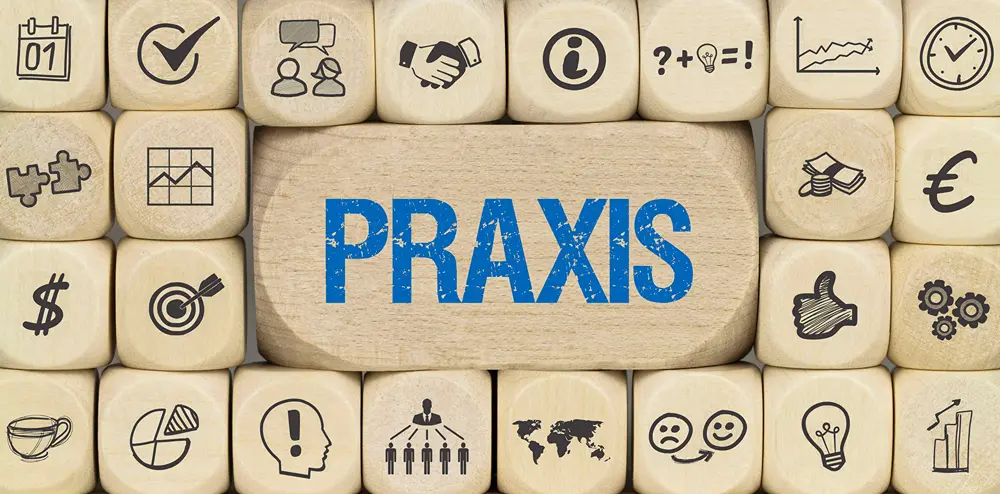How Praxis Practice Tests Build the Skills You’ll Need on Exam Day
A Praxis exam might be what stands between you and that great dream of joining the other 118,000+ teachers in active employment in the U.S. That said, properly and adequately preparing for the questions can go a long way. [1]
With Praxis practice tests, you have a good place to kick off your preparations. But how exactly do they help get you ready for exam day?
Familiarity With Exam Format
Praxis exams come in different formats. Practice tests show you exactly what to expect, be it the number of test questions, the types, and how much time you’ve got.
They also introduce you to the nature of questions, some of which can be tricky. You may find one like: “Which of the following is NOT true?” Those twists can throw you off if you’re not ready. But with practice, you start recognizing patterns.
A good way to make the best of this opportunity is to try taking a full-length practice test at least once. It’ll help you get used to sitting still and focusing for hours. Look into resources like elementary education practice questions or others appropriate to your level and begin preparing for the Praxis exam.

Identifying Strengths and Weaknesses
It’s not unlikely to be great at one aspect of the Praxis test and off on another. But how would you know without these practice exams? They don’t just show you the overall score report. They also show you why you got certain questions wrong.
Say you ace the reading comprehension content areas, but the math section proves a little too tricky for you. Now you know exactly where to focus your energy. Instead of wasting time reviewing every sample question, you can zero in on your weak spots and iron out the kinks.
It’s best to keep track of the content areas that give you trouble. Note down the question types you missed and the reason why. Is it because you didn’t know the concept? Did you misread the question? Over time, you’ll see patterns emerge.
Building Test-Taking Strategies
Taking the Praxis certification exams isn’t just about knowing the material. It’s also about being smart about how you approach the test. Practice tests help you develop those strategies.
Take time management, for instance. Practice can help you figure out how long to spend on each question. For example, if the exam has 60 multiple-choice questions in 90 minutes, you should aim for around 1.5 minutes per question.
Elimination is another good strategy to hone. Even if you’re unsure of an answer, crossing off obviously wrong choices narrows it down. Guessing can also help. If you’re stuck, make your best guess and move on. Practice tests let you experiment with these techniques until they become second nature.
Boosting Confidence

In a 2020 study involving students taking the National Eligibility cum Entrance Test for Undergraduates (NEET-UG) in India, around 75% of them felt stressed out before the exam. And, more likely than not, it’s a feeling shared by a lot of Praxis exam takers. But too much of it can actually hurt your performance. Practice tests help you fight that anxiety because you’ve been through every type of problem. [2]
The best part about all this is that as you see your scores improve over time, your confidence grows, and you start believing in yourself and your capabilities. That mental shift goes a long way.
Reinforcing Knowledge and Retention
Praxis practice tests reinforce what you’ve learned from textbooks, watching videos, and so on. They force you to actively recall information, which strengthens neural connections and helps lock that knowledge into your brain.
However, there’s one thing you need to nail: consistency. Don’t cram all your practice tests into one weekend. Space them out over weeks or months.
This technique, called spaced repetition, helps solidify information in your long-term memory, and it works. In fact, studies show that this approach, combined with proper sleep and physical activity, can lead to better test outcomes. [3]
But don’t just take up everything at once. Try switching between different topics in a single session. For instance, answer some math questions, then switch to reading comprehension. This keeps your brain sharp and prevents boredom.
Simulating Real-World Scenarios
Practice questions don’t just prepare you for the content. They prepare you for the experience. They simulate the pressure, the time constraints, and even the physical act of sitting still for hours.
For example, if you practice taking tests in a quiet room with no distractions, you’ll get used to blocking out noise. If you set a timer and stick to it, you’ll learn how to pace yourself in the test center.
Another important aspect is endurance. The Praxis requires focus and energy for extended periods. Practicing full-length tests helps you build the strength to stay alert and engaged for hours in the test center.
Closing Thoughts
Praxis practice tests can set you up for success when test day comes. This guide has shown you the different ways such tools achieve this goal. It’s up to you now to look through the different resources online, go for what best resonates with where you are and your career plan, and begin preparing for a future you’ll be ready for and proud of.
Sources
- “Occupational Employment and Wage Statistics”, Source: https://www.bls.gov/oes/2023/may/oes253099.htm
- “A Study on the Assessment of Anxiety and Its Effects on Students Taking the National Eligibility cum Entrance Test for Undergraduates (NEET-UG) 2020”, Source: https://pmc.ncbi.nlm.nih.gov/articles/PMC10523350
- “Spaced repetition and other key factors influencing medical school entrance exam success: insights from a French survey”, Source: https://link.springer.com/article/10.1007/s40670-023-01839-3






